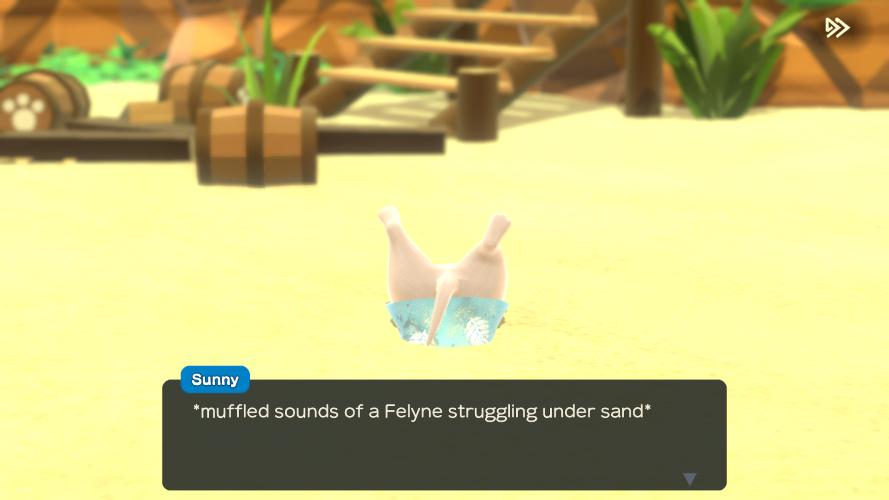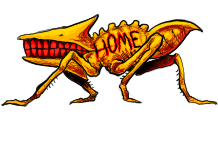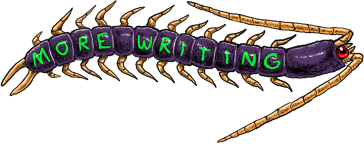2024 marks the twenty-year anniversary of Monster Hunter, one of my very favorite game series; I got into it about half its lifetime ago with 3 Ultimate on the 3DS per a friend's recommendation, and I've been deep in it ever since. There's been a celebratory air surrounding the franchise's big milestone that has gotten me into the mood to play a lot of it this year, including a dive back into the first generation, looking at how the original has aged and coming away with a surprising appreciation for its notoriously inaccessible design philosophy. This is something I'll have a lot to write about eventually, but I've decided to make it way more of an undertaking than it needs to be so that'll still be a while away.
Anyway, they also released a new match-three phone game.
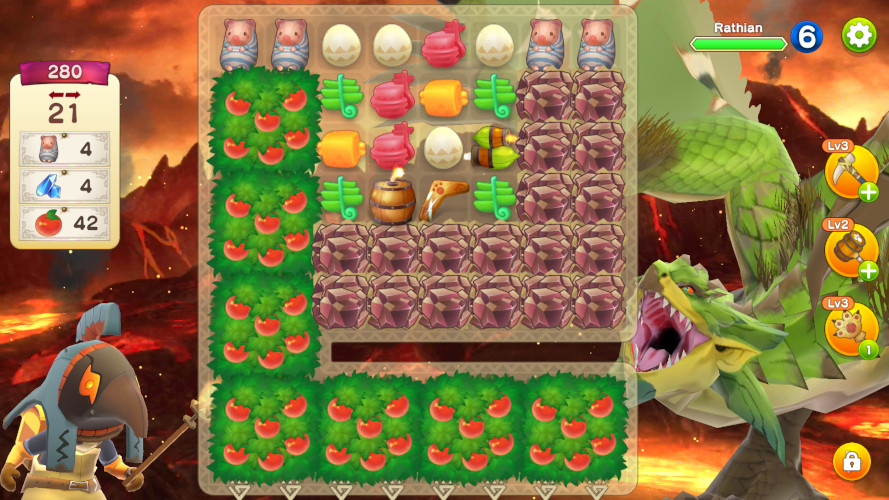
Like Monster Hunter Now, last year's MonHun-themed reskin of Pokémon Go, my phone's not compatible with Monster Hunter Puzzles: Felyne Isles for whatever reason. I was fully ready to leave it at that until I started to hear that this game was actually decent, so curiosity got the better of me; seeing as it doesn't use GPS data for its main conceit like Now does, there was no reason I couldn't just boot up Bluestacks and emulate it. This is really my preferable setup anyway, having a general aversion to using my phone for anything beyond the bare essentials of convenience. That goes double for mobile games, whose design is typically antagonistic and transparently predatory at best, but this series' spinoff titles are consistent in being woefully underdocumented and I figure if I have the opportunity to highlight one of these weird little games nobody talks about I'm gonna take it. That said: is this game even worth remembering, or will it deserve its inevitable dropoff into obscurity?
Because there are zero original ideas in the mobile game market, this game's structure is essentially Gardenscapes with a MonHun skin over it. You play as an amnesiac Felyne (for those unfamiliar, the spelling distinction denotes a race of talking bipedal cats) who washes up on the shore of an island populated by others of your kind, and fend off a Rathalos which has completely totaled the entire settlement here. Being evidently quite capable, you and the island's own local hunter then work together to help rebuild the little village one establishment at a time. You do this by—you guessed it—completing puzzle levels and earning an arbitrary token for each (in this case acorns) that you can spend to progress through the reconstruction process. A lot of the individual steps they have you spend acorns on are extremely transparent padding, but I suppose I can't fault them for wanting to make sure major progression milestones coincide with nice, clean level numbers. Per this, the first island is complete at 300 quests and caps off with a rematch against the Rathalos, after which you move onto a second. Restored facilities give you free rewards on a timer; once you unlock the post office facility, their prompts will expire after a bit and can then be collected from your mail at any time.
Every five levels there's a "hard" stage, and every ten you encounter a monster that you must defeat by completing all of the level objectives while it messes with your board on a turn-based timer. Each monster has its own variation on the general baseline of obstructing your play in some way: Barroth covers the bottom rows in mud that you have to clear away, Qurupeco summons a Jaggi to jump around on your board that have to make matches next to to get rid of, Gypceros covers random squares with a blinding flash that prohibits you from moving the piece underneath, and so on. Beat them, and the monster is repelled; explicitly no slaying involved, although this doesn't stop you from earning their hides and wings as rewards. Once a monster has been beaten in the campaign mode they are permanently available as as a subquest option, which the game gives you five daily tickets to attempt, so you are free to grind out those materials if you want to make their armor. (You can also spend these tickets to gather non-monster materials, do minor sidequests for the cats you've already helped, or earn bonus lives and boosters.)
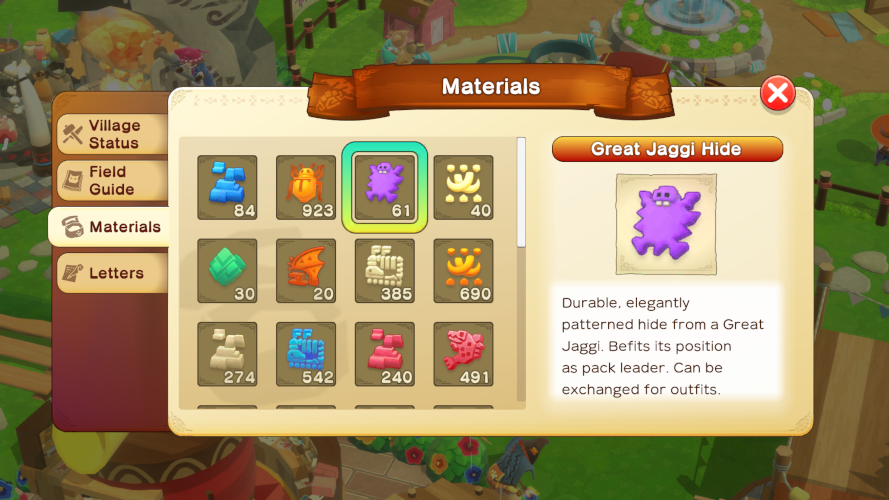
The presentation is a departure from the heavily simplified artstyle of the previous Felyne-focused subseries MH Diary and instead takes after the more recent Monster Hunter Stories games, directly reusing their monster models and the background images for the different locales all just being (very jpeg-compressed) screenshots of Stories 2. The pieces themselves, along with the materials that occasionally replace them, are all based off of the main series' classic item icons as rendered in pseudo-3D. (This does end up looking a little funny for things like hides but works nicely overall.) In contrast to the monsters, it does sorta show that the cats were newly-made for the budget project that this is, being cute enough but looking a little odd from certain angles and having a fairly small set of stiff animations and expressions that I honestly kind of started to find a little annoying. Entirely subjective, I know, but I can only watch the same stilted gesticulating loop so many times before it starts to grate on me. I tend to go for full face coverings in character customization anyway, and I especially stuck with it here because I just don't really like the panicking animation when you're almost out of moves.
Stage music for each locale and monster (aside from the bonus boards using the Hakolo Island background and some of the event tracks) features great new arrangements of familiar songs from throughout the series, and one of the game's highlights is definitely listening for whatever might pop up next—despite how few there ultimately are, every single generation is still represented at least once, and the expected presence of World and Rise is supplemented by pulls like Freedom Unite and Portable 3rd. And even among the gen 5 songs, most of them still aren't super obvious picks! They've got one of the arena themes represented in here and it's genuinely fantastic! It's a good way to give some of the less talked-about songs some time in the spotlight and a nice little treat for the franchise faithful.
As for the gameplay itself: it's what you'd expect with a few twists. This game sets itself apart from any of the other match-3 games I've played by actually letting you move pieces diagonally, it gives you a little more freedom in your matches by allowing 2-by-2 squares, and it expects you to use these advantages to their fullest potential. As with most of these sorts of games, your objective is to clear out obstacles on the board by making matches near them, and in practice this inevitably comes down to matching the usual big configurations to earn special pieces and combine them to destroy large chunks of the board at a time. These are themed around staple Palico skills; you've got your Barrel Bomb L, a color-clearing Field Horn, line-clearing Acorn Rockets, and Boomerangs that directly target quest objectives. If one of your combos ends on a multiple of 5, you activate a once-per-attempt state called "Meowllocation Time"—which I assume is a very forced play on "allocation time"—that gives you a few moments to freely rearrange pieces on the board and create as many of these as possible.
The obstacles are inherently limited by the relatively few things you can do to interact with them, which makes it genuinely pretty impressive how much variety they managed to squeeze out of them; they continue introducing new ones throughout the whole campaign and each of them comes with its own mechanical distinctions. For the most part, these also flavor themselves around MonHun's setting very nicely: things like binoculars that reveal obscured parts of the board, rocks that need to be chipped away and occasionally contain ore you need to collect, switches that activate line-clearing ballistae, et cetera. (Though there's occasionally an odd one out, like some bona fide Aperture Science portal technology showing up fairly deep in.) Most of these need to be hit several times to clear away, and a lot of the mid-to-late game starts to become an exercise in "how many times can we force the player to retread the same square in a single round?"
On that note: the difficulty.
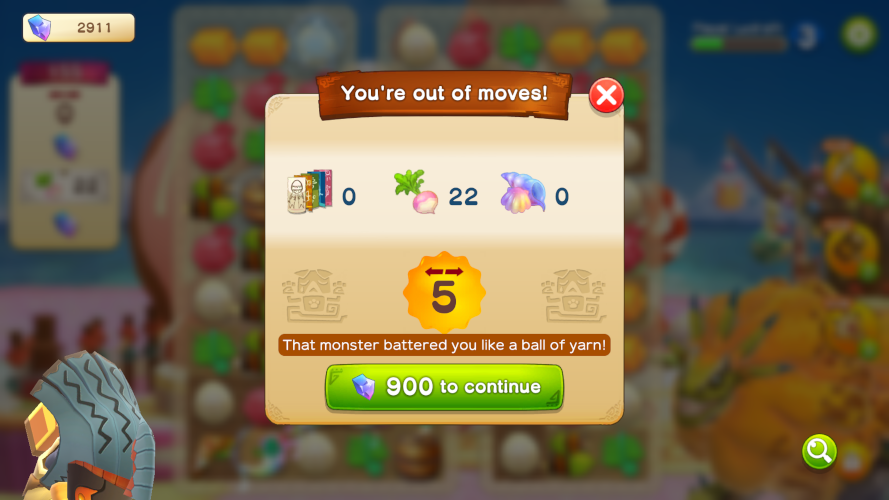
Mobile games are of three breeds; there are ones where ads are unavoidable interruptions, ones where ads and microtransactions are present but mostly or entirely opt-in for bonuses, and ones that are free of both but not free-to-play. (Tangent: the dreaded gacha genre is kind of its own thing, but for simplicity's sake let's call it a subset of #2.) This game is of the second variety, and with it comes certain expectations for how these things—and the game design to incentivize them—will be handled. Games of this sort have a well-warranted reputation. They do this very consistently. A game will ostensibly be free... and then, once you've played enough for it to get its hooks in you, the difficulty escalates so severely that the only way to progress is either to spend days at a time waiting to get lucky enough for the game to give you mercy, or spend some of your actual real-life money on a few extra turns or items.
MHPuzzles has the trappings of these games—limited lives that recharge in real time, arbitrary gems earned for leftover special pieces that you can spend to get extra moves. (No sign of the normal series currency of zenny.) But it... only kind of does this? After a certain point it absolutely does start to get very stupid and the "hard" distinction becomes pretty meaningless, but the game is surprisingly generous in handing you tools to bruteforce your way through a puzzle. Between bonuses earned from events, boosters earned for watching ads, daily gifts from people on your friends list, and the up to three specials you're automatically given for clearing successive boards without losing, there will always be something you can use to give yourself an edge. You know, as long as you're patient enough not to use them all up in one go. If you lose while particularly close to beating a board, the game will occasionally even spawn a horn next to one of your other items to basically give you a mercy pass to the next stage. ...Assuming you have enough gems to spend on a continue. You have been saving those, right?
I set out at first with my trusty mobile adblocker installed, but after a point the difficulty clearly expects you to be using the free ad boosters if nothing else. I'm not proud that I folded, but at the very least I have a higher tolerance for video game ads compared to every other variety of the things. I can't pretend I don't watch the big Gamer Trailer Shows. I can't pretend I didn't find at least one game that actually looked solid and charming enough to give it a go. And, you know, at least some of these ads are awful in funny ways. Can you tell I'm grasping at straws here? It's really subtle. Regardless, the ordeal of pressing a mute button and distracting yourself with something else for half a minute is generally worth the edge it gives you. You win this time, mobile game design.
Using only the tools the game provided, I was never stuck on any one quest for longer than maybe twenty or thirty minutes collectively (spaced between the 2½ hour full life regen). This is a puzzle game where most of the solutions are typically "make a lot of bombs and boomerangs and throw explosions at your problems", but occasionally things do line up in such a way that choosing the correct combinations of items to use when it's down to the wire is genuinely a bit of a brainteaser. It's just not really an intentionally-designed one.
...But I suppose that means it's at least well-tuned? Aside from, you know, the fact that the game's RNG might just refuse to cooperate and give you a winnable configuration. And the way that the free boomerang that spawns on your first attempt at a level has an uncanny knack for overwriting some piece that would have let you make something better. Those are probably also on purpose, because this IS one of those types of games. So I guess it still counts for what it's trying to do.
If all of the freebies aren't enough for you, the standard monetization model for these things comes in with a fairly out-of-the-way shop menu where you can buy gems and boosters for money. The bare minimum you can spend is two bucks USD, which earns you enough gems to get... one total continue. I am not going to do the math to figure out whether the relative value of the maximum $80(!!!) option is a "deal" compared to this, because nobody should ever spend that much money on a phone game under any circumstance. There's also a separate "VIP Salon" tab with cosmetic items and boosters, which use their own currency of tickets earned through a subscription model called a VIP License. The first month is free, it advertises! Give us your payment info anyway. I'm not privy to the mechanics of this (aside from the fact that it unlocks a "fast forward" feature that lets you skip through puzzles), but I have seen the phrase "paywalls behind paywalls" used to describe things in this game, which does not bode well for the means of acquiring these tickets. You can get a steady trickle of them for free through other means, but it'll take you forever to be able to afford literally anything. (Some events also have their own separate premium pass that unlocks access to items you still have to earn anyway. Passing these up when an event ends is the only time the game ever actively nags you to buy something, because they gotta get that sweet sweet FOMO cash.)
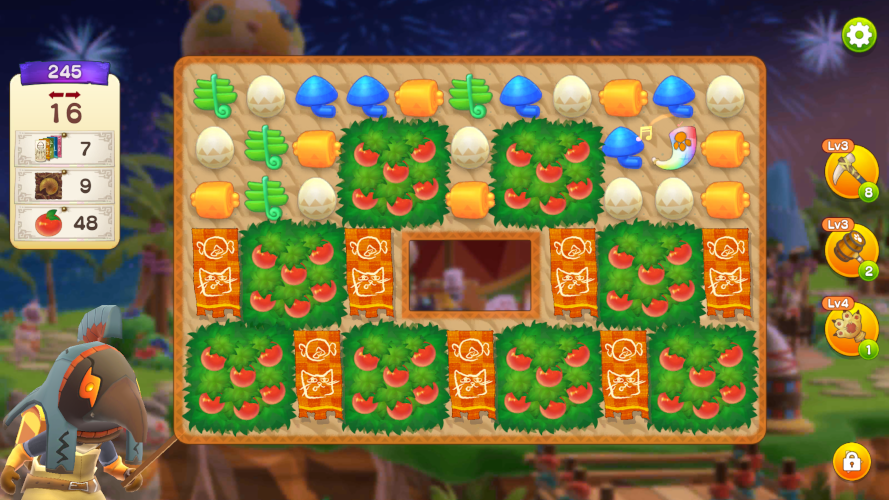
Once you've cleared all of the currently-available campaign stages, you unlock Master Quests: sort of an endless mode with a mixture of reused hard stages from the main mode and a few new ones, which comes with its own weekly leaderboard in exchange for significantly reduced normal rewards. It has one total stage background and one song, a chill, jazzy remix of series main theme "Proof of a Hero", which wouldn't sound out of place on one of the myriad arrange albums that have come out for this series. Master Quests are there to provide theoretically infinite content to keep you occupied while you're waiting for something new to come out, but... by the time you're in the triple-digits it becomes pretty obvious that there's a limited number of these on repeat, and I started to ask myself if this wasn't the third or fourth time I've seen this exact Great Jaggi board. And because these are all necessarily super-hard quests, it eventually just turns into an endless cycle of "oh god, it's this one again".
I was worn out of this by stage 200 or so, so I decided I would change my approach and ignore the game's competitive elements (i.e. cycling leaderboards and races for special items used) to focus in on stockpiling lives for the next time there was actually new content. The game tells you 5 is the max, but that's actually just the limit where it stops automatically recharging; as far as I can tell, there's not actually a cap on the amount you can have at a time. (The counter stops at 99+, which looks conspicuously janky because there's clearly only space for two characters on the heart icon.) And as it turns out: this is a significantly better way to play the game! Being able to just go for as long as you want until you don't feel like playing anymore is a million times better for pacing than being forced to stop after every five failed attempts! It's freeing to not have to worry about managing the regen timer like a resource! It almost makes you forget this is a mobile game with mobile game design! Almost! Just do this!!! Do this earlier than I did!!!
This all being said: it's kind of difficult to judge this game on the merits of a complete product right now, because by its very nature it's inherently never going to be "finished" until it ends service and is inevitably swept under the rug at the end of the day. This review for it a month after launch isn't going to be indicative of what the game actually is for very long. There's clearly a lot more planned. The loading splash screen shows a good four or five islands and you can, as of this writing, access one and a quarter. The island progression padding is seemingly exponential in order to drag this out as long as they physically can—It took 300 quests to finish ten facilities on the first island, and 200 more to not even be enough for three on the second. It took me about two weeks to make it to the original limit of 450 quests, new ones have released weekly since then in batches of 25 that take all of an hour or two to get through, and the extra fifty they've tacked on so far have STILL not been enough to finish helping the current last Felyne because there's such a mountain of redundancies it makes you do one at a time.
Maybe the most damning element of this game not being remotely close to finished is that... for all the variety in the stage elements, the same is not true of the actual monsters in this Monster Hunter game. The loading tips half being about the basic franchise worldbuilding (probably for the sake of the match-three demo who might download this with no knowledge of the series) stand out for mentioning that there are over 200 monsters that have been discovered! The image here shows a picture of Nargacuga, who is not in this game yet. As a matter of fact, most monsters are not in this game. There are not "so many monsters from the Monster Hunter series", as this game's website puts it. There are currently eleven. Thirteen, if you want to be generous and include the event-exclusive Zinogre and the Jaggi that pops up on the island every few days. The map is clearly setting up for Magnamalo and Iodrome to show up eventually, but they're both still nowhere to be found.
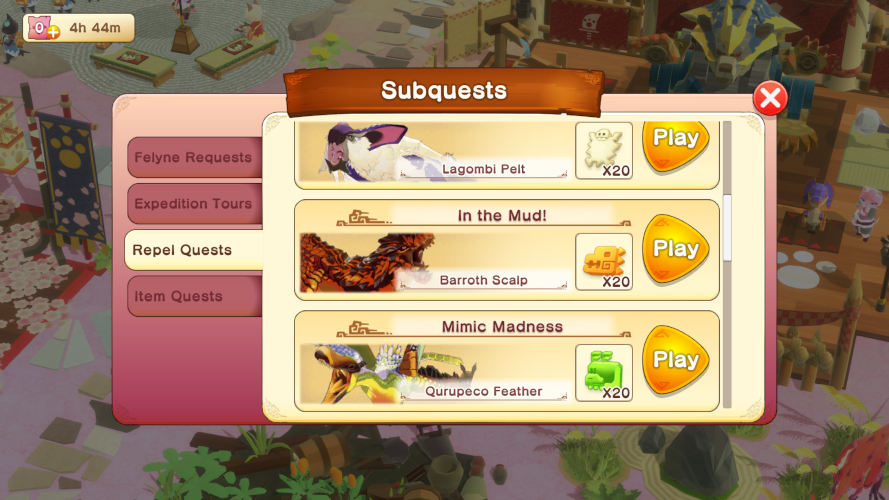
For the most part, you will be seeing the same seven earlygame threat level monsters ad nauseam forever and the rest of them a very small handful of the time. That Rathian back in the first image? That was her first appearance, nearly 300 quests in, and by the time I got to her it had only been those seven monsters the entire time and one whole appearance by something else eighty levels ago. After the rate they're introduced early on, having fresh new faces then dry up for such a long stretch is... fatiguing. And that kind of describes a lot of this game. The one-two punch of this and the progression slowing to a complete crawl is definitely a drain, but admittedly, they probably didn't expect some clown with no job to just no-life their way through everything there is to offer this quickly. (Well, they probably did, but I'm not the casual demographic who's gonna be the target audience.) I'm willing to concede that I'm an outlier here. But also... that means most people will spend even longer in that drought of nothing new.
And sure, maybe it wasn't the worst call to focus in on level elements to bring the variety instead of the guys you'll only be seeing for 10% of the stages. But at the same time... it's Monster Hunter. The series about fighting a lot of monsters? That one? It's not like they didn't just lift all of these models straight from one of their other games. It feels kind of mismatched how much love for the series was clearly put into stuff like the music choices, but the single most central element of the franchise seems like an afterthought.
A lot of this will probably be moot a year or two down the line, presuming the game is even still online by that point. The main quest progression will steadily introduce new monsters over time and the general rotation of regulars will fill out. But this will do nothing for the pacing of the launch content, which will still have you seeing the same seven guys over and over for a week and a half. Probably even longer! It took me a week and a half and I was playing this thing pretty nonstop! And I feel like that sentiment kind of carries over to my general feelings about this game. There's absolutely a ton of content here; having enough gameplay to sustain that much playtime is definitely nothing to sneeze at, and there's clearly some decent effort put into balancing everything and staying faithful to the series' aesthetics. It's just that there's not a lot of substance beyond the campaign puzzles, and the rest of the package starts to run dry well before you run out of new board layouts.
But, you know, it's at least always fun to make the entire puzzle explode.
